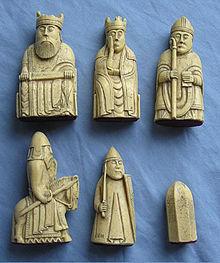
MODERN COMPETITIVE CHESS
Modern competitive chess[edit]
Competitive chess became visible in 1834, and the 1851 London Chess tournament raised concerns about the time taken by the players to deliberate their moves. On recording time it was found that players often took hours to analyze moves, and one player took as much as two hours and 20 minutes to think over a single move at the London tournament. The following years saw the development of speed chess, five-minute chess and the most popular variant, a version allowing a bank of time to each player in which to play a previously agreed number of moves, e.g. two hours for 30 moves. In the final variant, the player who made the predetermined number of moves in the agreed time received additional time budget for his next moves. Penalties for exceeding a time limit came in form of fines and forfeiture. Since fines were easy to bear for professional players, forfeiture became the only effective penalty; this added "lost on time" to the traditional means of losing such as checkmate and resigning.[15]
In 1861 the first time limits, using sandglasses, were employed in a tournament match at Bristol, England. The sandglasses were later replaced by pendulums. Modern clocks, consisting of two parallel timers with a small button for a player to press after completing a move, were later employed to aid the players. A tiny latch called a flag further helped settle arguments over players exceeding time limit at the turn of the 19th century.[15]
A Russian composer, Vladimir Korolkov, authored a work entitled "Excelsior" in 1958 in which the White side wins only by making six consecutive captures by a pawn.[16]Position analysis became particularly popular in the 19th century.[16] Many leading players were also accomplished analysts, including Max Euwe, Mikhail Botvinnik,Vasily Smyslov and Jan Timman.[16] Digital clocks appeared in the 1980s.[15]
Another problem that arose in competitive chess was when adjourning a game for a meal break or overnight. The player who moved last before adjournment would be at a disadvantage, as the other player would have a long period to analyze before having to make a reply when the game was resumed. Preventing access to a chess set to work out moves during the adjournment would not stop him from analyzing the position in his head. Various strange ideas were attempted, but the eventual solution was the "sealed move". The final move before adjournment is not made on the board but instead is written on a piece of paper which the referee seals in an envelope and keeps safe. When the game is continued after adjournment, the referee makes the sealed move and the players resume
